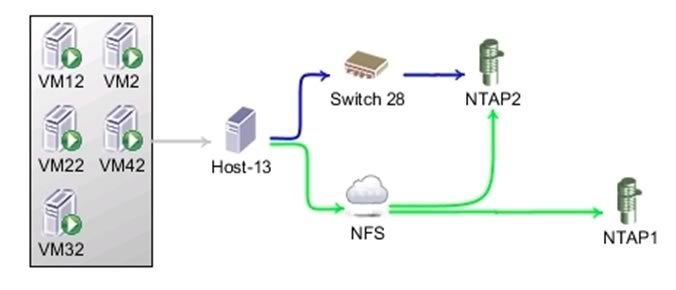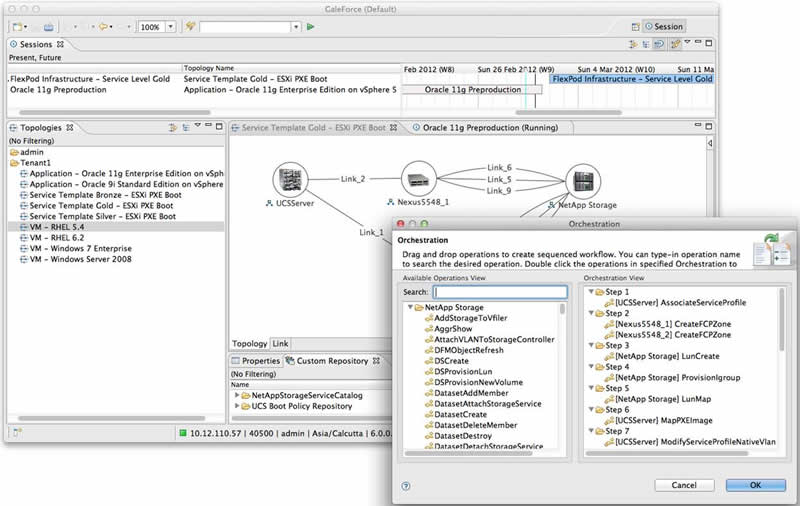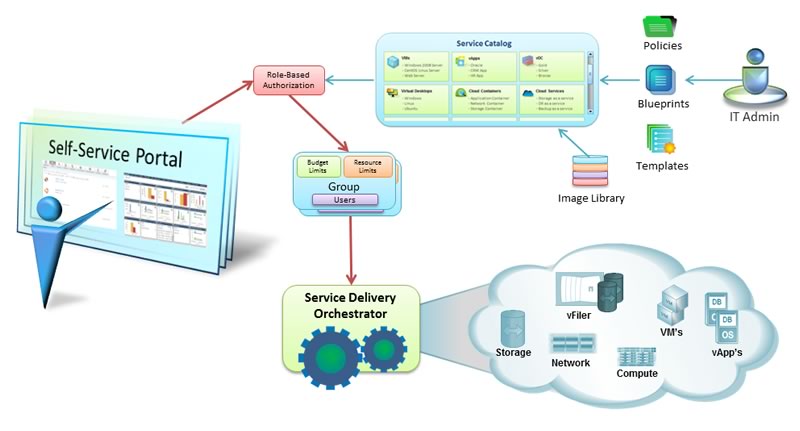




Since its introduction in late 2010, the FlexPod® data center platform—a pretested and validated solution from NetApp and Cisco—has been tremendously successful. So far, FlexPod configurations have been installed at over 600 customer sites in 33 countries.
We attribute this success to the fact that FlexPod was designed to take the pain out of deploying a shared IT infrastructure and to make the transition to the cloud simpler. The FlexPod platform is built from best-in-class components and is pretested with leading hypervisors and operating systems, including those from VMware, Citrix, and Microsoft. FlexPod helps you provision new services or roll out new data center infrastructure quickly and easily.
For FlexPod management, we are working with partners to offer a range of management choices in which each product has been carefully validated; you are free to choose the products that best meet your needs. We think this approach gives companies making the transition to a cloud service model the best chance for success.
Choosing the Right Tools to Facilitate the Move to the Cloud

With operational expenses (opex) averaging around eight times capital expenses (capex), many IT organizations are looking to shared infrastructure and cloud services as a way to simplify operations and remove IT roadblocks that can slow business progress. Management solutions for FlexPod provide the essential tools to greatly simplify the transition to the cloud.
Based on our experience, we've identified four fundamental elements that organizations should include as they make the transition to shared IT infrastructure and the cloud. The management tools you choose should include most or all of these capabilities (Table 1).
Table 1) The four fundamental elements of a private cloud.
| Service catalog | Define your services with well-defined policies that automatically map service levels to infrastructure attributes. |
| Service analytics | Optimize your services with centralized monitoring, metering, and chargeback to enhance visibility and both cost and SLA management. |
| Automation | Rapidly deploy your services by integrating and automating provisioning, protection, and operational processes. |
| Self-service | Empower IT and your end users by enabling service requests to be fulfilled through a self-service portal. |
Each of these elements was discussed in more detail in a recent Tech OnTap article. Keeping these four elements in mind during planning, rollout, and tool selection will help you succeed.
The FlexPod management solutions illustrate how management tools provide these capabilities. The following subsections provide a snapshot of some of the capabilities of currently available FlexPod management tools. (Check out the sidebar to view video demonstrations of FlexPod management tools.)
Service Catalog
A service catalog lets you define a menu of services for end users to choose from. Figure 1 illustrates the Cloupia Unified Infrastructure Controller (CUIC) service catalog.

Figure 1) Service catalog. The Cloupia Unified Infrastructure Controller allows you to create a service catalog with defined offerings such VMs, virtual desktops, and virtual applications. Optionally you can make this catalog available to end users through a self-service portal. (Figure courtesy of Cloupia.)
Service Analytics
For service analytics, you want to be able to model and analyze your entire infrastructure (servers, networks, storage, and virtual machines) to understand how application workloads, utilization levels, and resources interact. Tools that target each element of infrastructure individually may miss the big picture. For example, Figure 2 shows how NetApp® OnCommand™ Insight can be used to view all the infrastructure elements being used by a particular application. It also shows a chargeback report that encompasses both VM and storage use.


Figure 2) Service analytics. Among its many cross-domain capabilities, NetApp OnCommand Insight can quickly show you all infrastructure elements associated with a particular application or service and provide chargeback reports that include both VMs and storage.
Automation
Automation simplifies your life by allowing you to orchestrate workflows that can be used over and over to perform complex tasks—even those that involve multiple infrastructure elements—with just a few mouse clicks. For instance, provisioning a new virtual machine may require multiple steps on servers, storage, and networks to complete. As shown in Figure 3, a management tool such as GaleForce Control Center from Gale Technologies can help you automate this process, allowing you to accomplish dozens of background tasks with just a few clicks or allow end users to accomplish the task via a self-service portal.

Figure 3) Automation with GaleForce Control Center. The architects interface shown lets you automate provisioning tasks, orchestrate workflows, and publish infrastructure or service templates to a self-service portal. (Figure courtesy of Gale Technologies.)
Self-Service
The ultimate goal in a cloud is often to be able to present a self-service portal to end users to allow them to request and receive infrastructure, application, or other services without administrator intervention. Such a portal typically leverages the service catalog and automation capabilities described above.
A portal user simply selects the services he or she wants from the service catalog presented as a menu of choices. Appropriate resources are then allocated automatically and provisioned for use. Appropriate data protection and other service levels may be provided automatically based on the user's selections. Once provisioned, the portal may also provide the end user with monitoring and management capabilities (for the allocated resources only).

Figure 4) Self-service. A self-service portal integrates your predefined service catalog and advanced automation, allowing an end user to request and receive IT resources without intervention and then monitor, manage, and control those resources. (Figure courtesy of Cloupia.)
Validated Management Solutions for FlexPod

As we mentioned in the introduction, to facilitate FlexPod management and cloud orchestration we have taken a different approach than that of most infrastructure providers. Rather than locking you into a single toolset available only from us, Cisco and NetApp have developed open APIs for FlexPod components, with detailed guidelines for FlexPod management that independent software developers can use to tailor management toolsets for FlexPod.
You can speed the deployment of new services on FlexPod and reduce risk by choosing from the turnkey management solutions available from FlexPod partners. Validated management solutions give you off-the-shelf integration with Cisco® UCS™, Cisco Nexus®, and NetApp storage; adaptable and extensible workflows; and a unified management experience. These solutions have been tested in NetApp and Cisco labs to verify that they meet an extensive set of requirements in one or both of the following categories:
- Automation and Orchestration
- Monitoring and Analytics (coming soon)
As long as partners address the specific requirements we have set out, they are free to implement whatever additional functionality they choose, so innovation is in no way constrained.
For example, the automation and orchestration specification describes a set of core management functions on the storage, network, and physical server components of FlexPod, including such capabilities as cloning a LUN, adding and removing VLANs, and setting up server pools. Such core functions are clearly specified and validated so that management software takes full advantage of the underlying capabilities of the hardware components of FlexPod.
We've also described specific setup and management algorithms for the performance of operations that involve multiple components in the FlexPod stack. These algorithms use the core functions to accomplish tasks like provisioning NetApp FC storage to a specific service profile on UCS.
Finally, we define some specific design objectives that are required to deliver a cohesive user experience using the defined operations and algorithms. By prescribing these baseline capabilities in an objective way, we encourage software partners to innovate in their approach to provide an end-to-end setup, configuration, and operational management model for FlexPod. These guidelines provide a foundation for FlexPod management that a software developer can use to cover the baseline FlexPod management functions in a uniform way.
Partners with Validated Products

There are currently eight different management vendors developing solutions for FlexPod. Of these, three partners have passed solution validation testing for automation and orchestration.
 | Cloupia Unified Infrastructure Controller Validated for Automation and Orchestration Cloupia's Unified Infrastructure Controller is a management and automation system capable of orchestrating and provisioning virtual and physical infrastructure services across the entire FlexPod configuration. |
 | Gale Technologies GaleForce Turnkey Cloud for FlexPod Validated for Automation and Orchestration The GaleForce Turnkey Cloud solution allows organizations to quickly create internal and hybrid clouds combining legacy and new infrastructure to gain improved agility, utilization, and simplicity. |
 | CA Automation Suite for Data Centers Validated for Automation and Orchestration The Automation Suite for Data Centers is designed to help you transform your IT infrastructure to dynamically deploy and elastically scale IT services. |
You can view our FlexPod Management Web page for the most up-to-date information on FlexPod management solutions.









